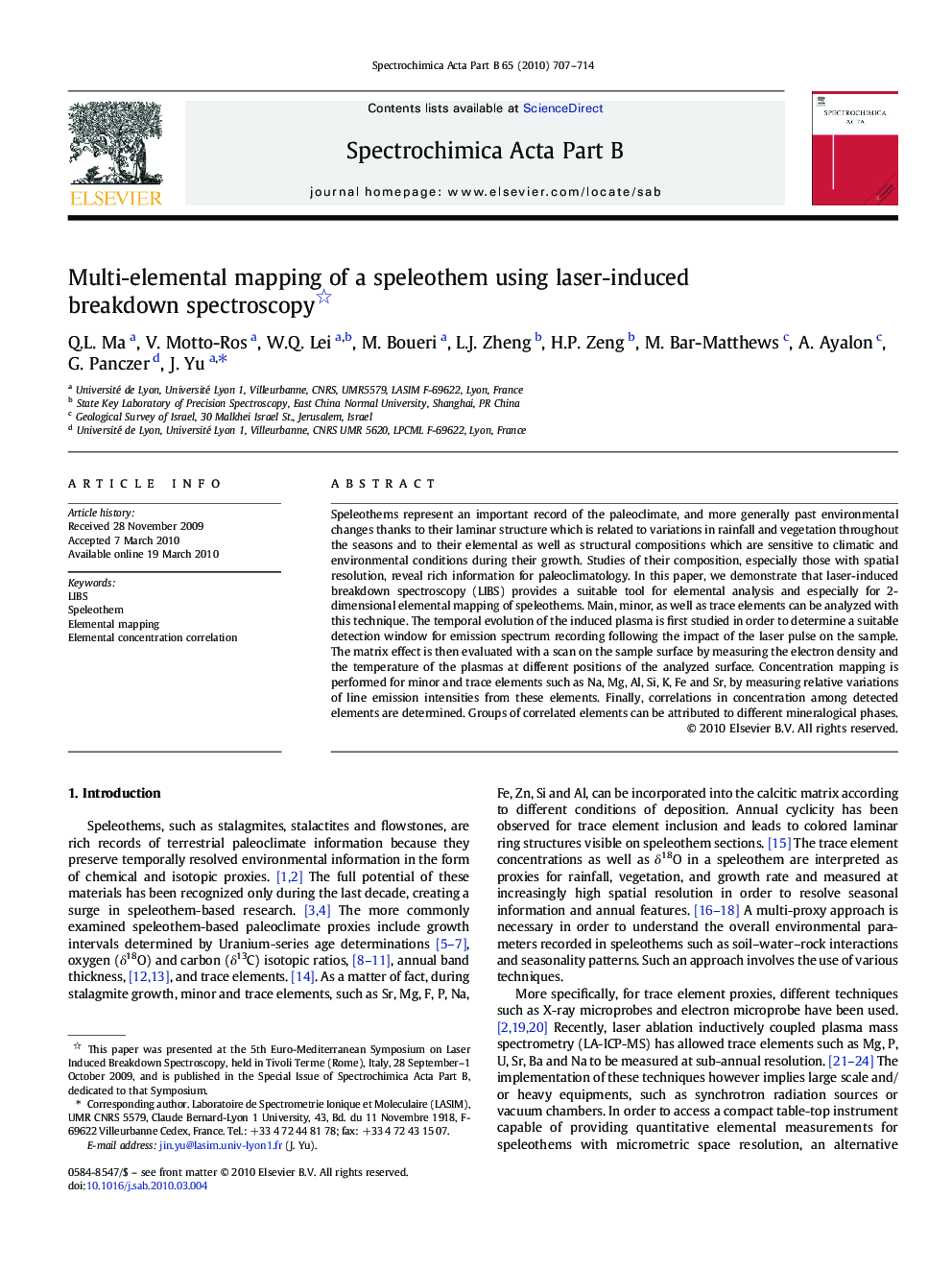| Article ID | Journal | Published Year | Pages | File Type |
|---|---|---|---|---|
| 1240314 | Spectrochimica Acta Part B: Atomic Spectroscopy | 2010 | 8 Pages |
Speleothems represent an important record of the paleoclimate, and more generally past environmental changes thanks to their laminar structure which is related to variations in rainfall and vegetation throughout the seasons and to their elemental as well as structural compositions which are sensitive to climatic and environmental conditions during their growth. Studies of their composition, especially those with spatial resolution, reveal rich information for paleoclimatology. In this paper, we demonstrate that laser-induced breakdown spectroscopy (LIBS) provides a suitable tool for elemental analysis and especially for 2-dimensional elemental mapping of speleothems. Main, minor, as well as trace elements can be analyzed with this technique. The temporal evolution of the induced plasma is first studied in order to determine a suitable detection window for emission spectrum recording following the impact of the laser pulse on the sample. The matrix effect is then evaluated with a scan on the sample surface by measuring the electron density and the temperature of the plasmas at different positions of the analyzed surface. Concentration mapping is performed for minor and trace elements such as Na, Mg, Al, Si, K, Fe and Sr, by measuring relative variations of line emission intensities from these elements. Finally, correlations in concentration among detected elements are determined. Groups of correlated elements can be attributed to different mineralogical phases.
